Abstract
The rate of ADP-glucose formation from [14C]glucose 6-phosphate and ATP by the soluble fraction of lysed chloroplasts is studied as a function of the levels of metabolites (3-phosphoglycerate, orthophosphate, hexose monophosphate, and ATP) as determined in whole chloroplasts of Spinacia oleracea in light and dark.
A change in 3-phosphoglycerate concentration (from 4 to 1.4 millimolar, as in whole chloroplasts during light-dark transition) decreases the rate of ADP-glucose formation 6- to 7-fold. An increase in hexose monophosphate concentration from 2 to 6 millimolar, which occurs at the same time in whole chloroplasts, stimulates ADP-glucose formation only slightly.
At constant levels of orthophosphate (4 millimolar) and 3-phosphoglycerate (4 millimolar), a change in ATP concentration from 0.2 to 1 millimolar causes an immediate 4- to 5-fold increase in the rate of ADP-glucose formation. Another significant stimulation of ADP-glucose formation (about 4- to 6-fold) is obtained after addition of dithiothreitol at high concentrations (50 millimolar). A simultaneous increase in the concentrations of 3-phosphoglycerate, ATP, and dithiothreitol, with orthophosphate and Mg2+ being constant at 4 and 5 millimolar, respectively, causes a 130-fold increase in the rate of ADP-glucose formation (from 0.042 to 5.49 microgram atoms carbon per milligram chlorophyll per hour).
The role of these and other factors is discussed with respect to light-dark regulation of starch formation in intact chloroplasts.
Full text
PDF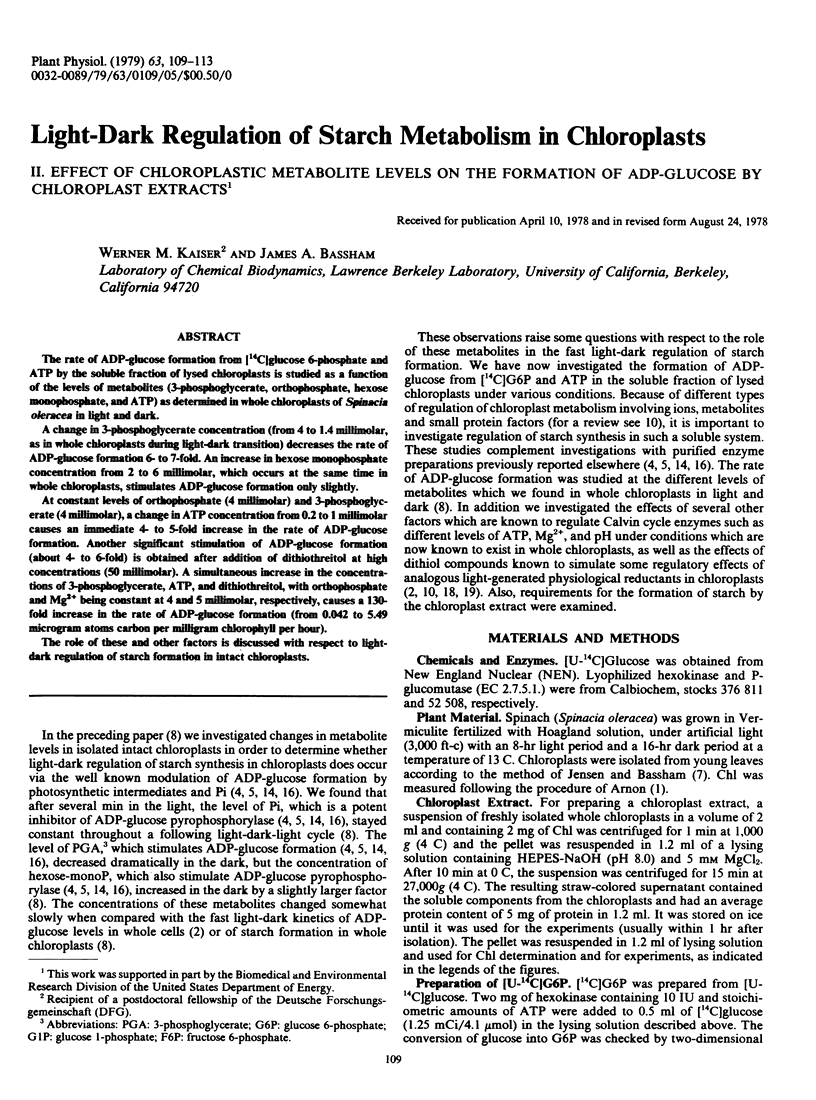
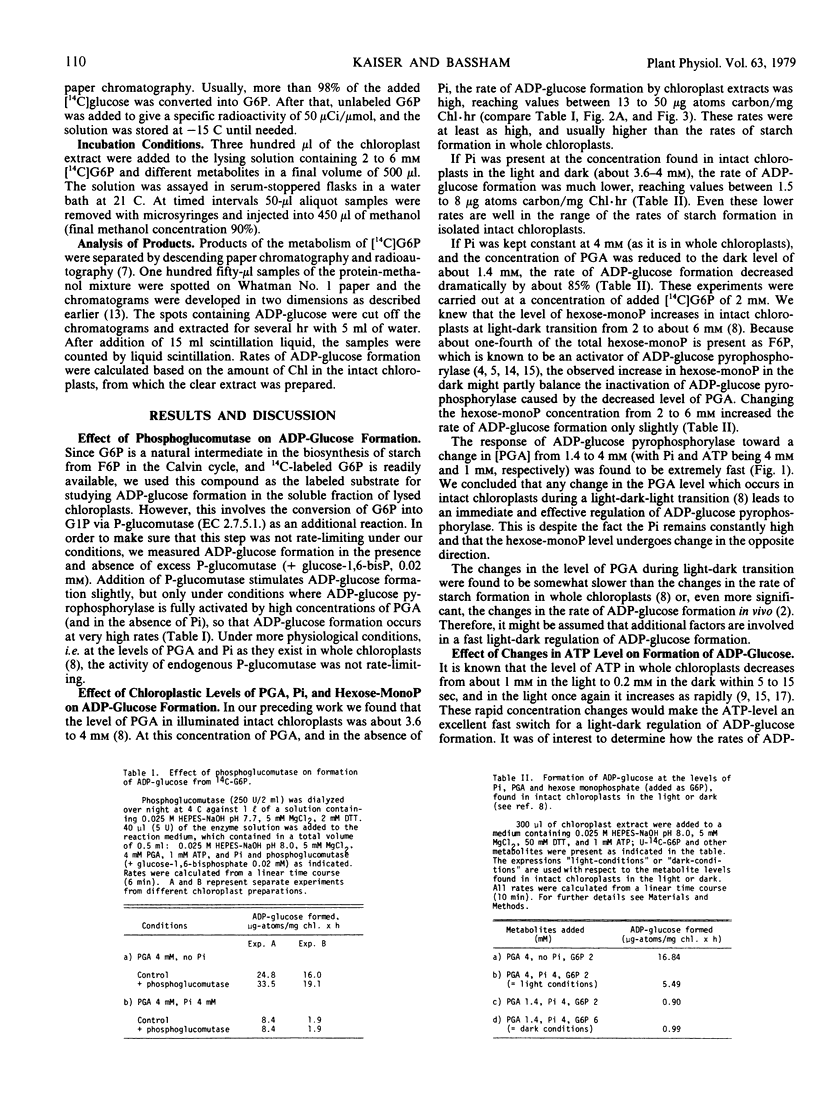
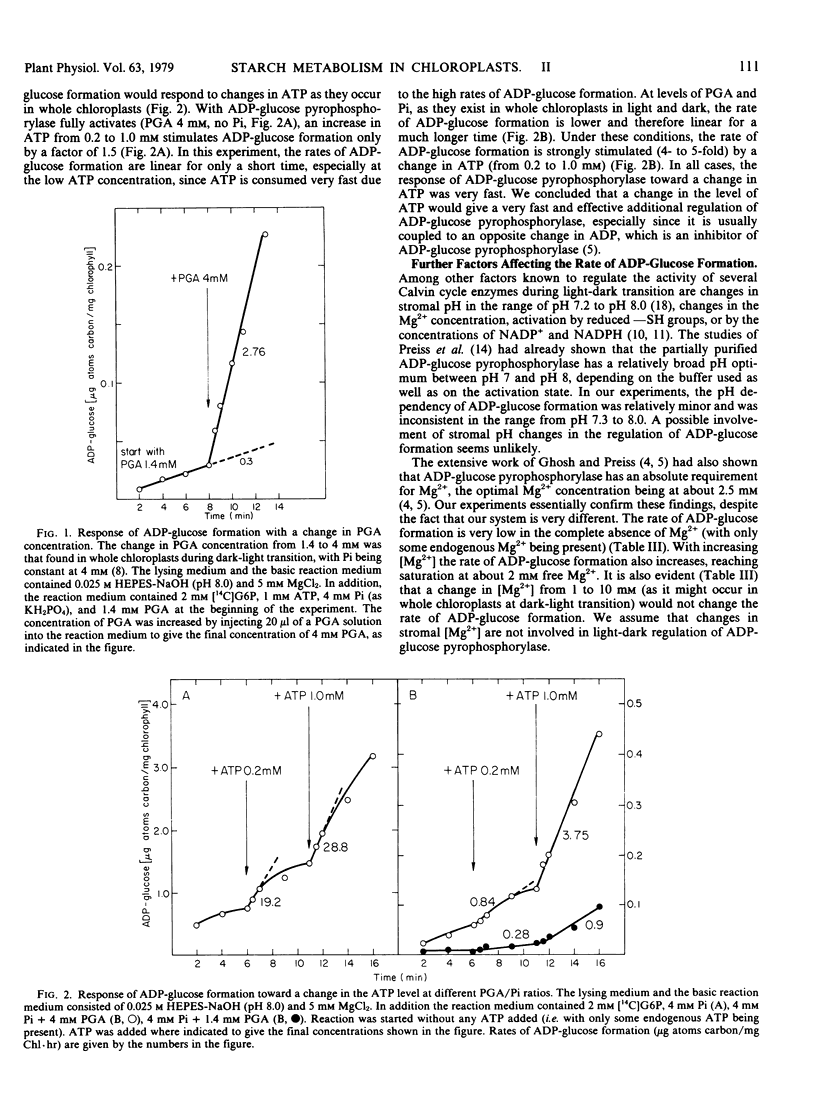
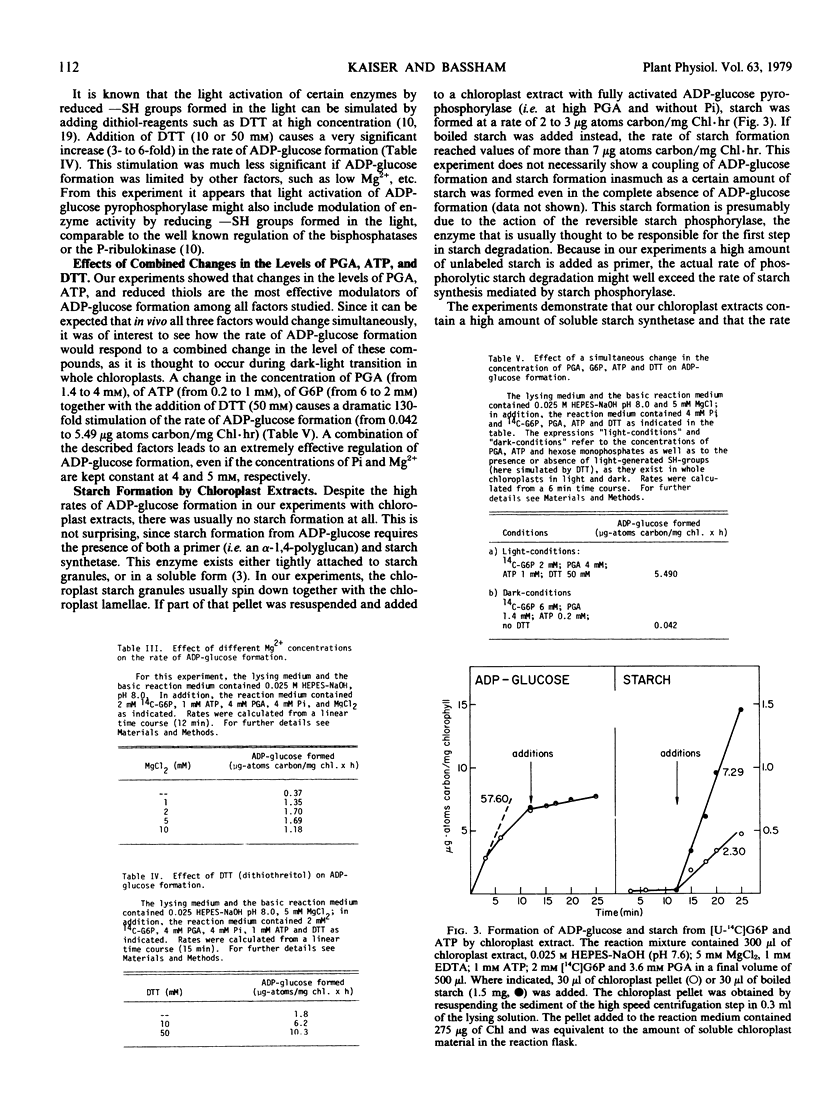
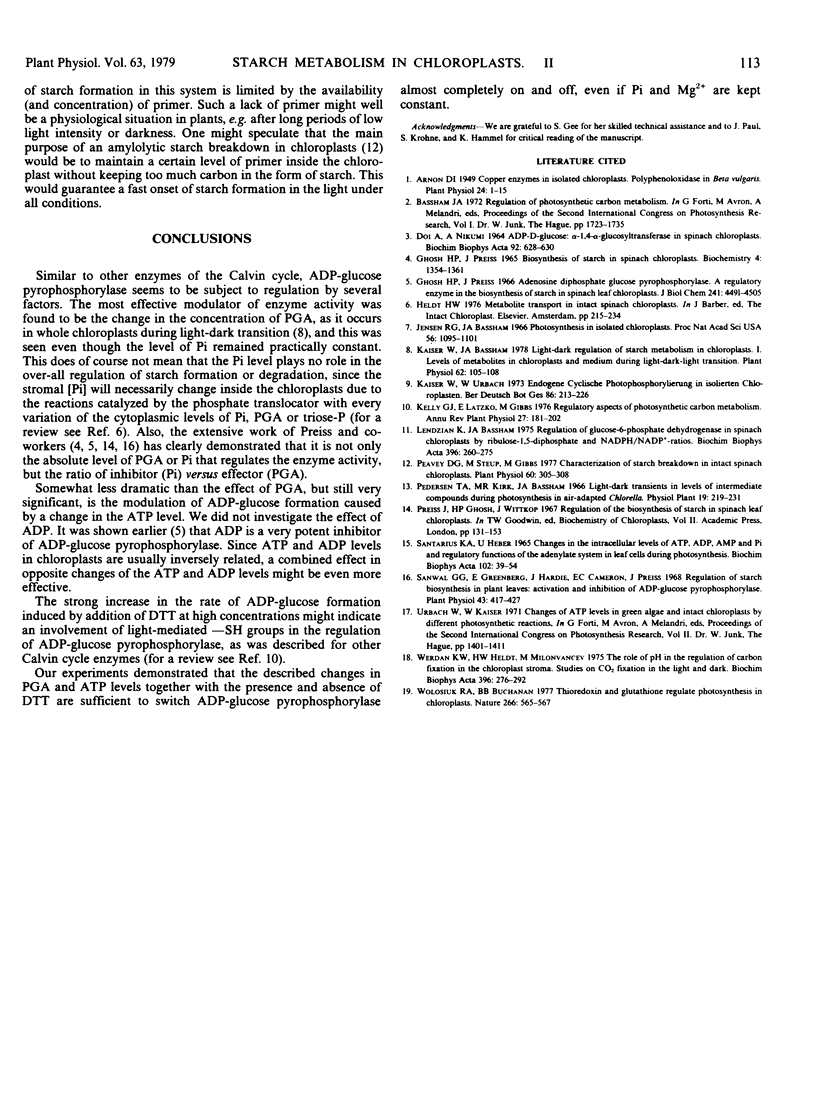
Selected References
These references are in PubMed. This may not be the complete list of references from this article.
- Arnon D. I. COPPER ENZYMES IN ISOLATED CHLOROPLASTS. POLYPHENOLOXIDASE IN BETA VULGARIS. Plant Physiol. 1949 Jan;24(1):1–15. doi: 10.1104/pp.24.1.1. [DOI] [PMC free article] [PubMed] [Google Scholar]
- Ghosh H. P., Preiss J. Adenosine diphosphate glucose pyrophosphorylase. A regulatory enzyme in the biosynthesis of starch in spinach leaf chloroplasts. J Biol Chem. 1966 Oct 10;241(19):4491–4504. [PubMed] [Google Scholar]
- Ghosh H. P., Preiss J. Biosynthesis of starch in spinach chloroplasts. Biochemistry. 1965 Jul;4(7):1354–1361. doi: 10.1021/bi00883a020. [DOI] [PubMed] [Google Scholar]
- Jensen R. G., Bassham J. A. Photosynthesis by isolated chloroplasts. Proc Natl Acad Sci U S A. 1966 Oct;56(4):1095–1101. doi: 10.1073/pnas.56.4.1095. [DOI] [PMC free article] [PubMed] [Google Scholar]
- Lendzian K., Bassham J. A. Regulation of glucose-6-phosphate dehydrogenase in spinach chloroplasts by ribulose 1,5-diphosphate and NADPH/NADP+ ratios. Biochim Biophys Acta. 1975 Aug 11;396(2):260–275. doi: 10.1016/0005-2728(75)90040-7. [DOI] [PubMed] [Google Scholar]
- Peavey D. G., Steup M., Gibbs M. Characterization of starch breakdown in the intact spinach chloroplast. Plant Physiol. 1977 Aug;60(2):305–308. doi: 10.1104/pp.60.2.305. [DOI] [PMC free article] [PubMed] [Google Scholar]
- Santarius K. A., Heber U. Changes in the intracellular levels of ATP, ADP, AMP and P1 and regulatory function of the adenylate system in leaf cells during photosynthesis. Biochim Biophys Acta. 1965 May 25;102(1):39–54. doi: 10.1016/0926-6585(65)90201-3. [DOI] [PubMed] [Google Scholar]
- Sanwal G. G., Greenberg E., Hardie J., Cameron E. C., Preiss J. Regulation of starch biosynthesis in plant leaves: activation and inhibition of ADPglucose pyrophosphorylase. Plant Physiol. 1968 Mar;43(3):417–427. doi: 10.1104/pp.43.3.417. [DOI] [PMC free article] [PubMed] [Google Scholar]
- Werdan K., Heldt H. W., Milovancev M. The role of pH in the regulation of carbon fixation in the chloroplast stroma. Studies on CO2 fixation in the light and dark. Biochim Biophys Acta. 1975 Aug 11;396(2):276–292. doi: 10.1016/0005-2728(75)90041-9. [DOI] [PubMed] [Google Scholar]


